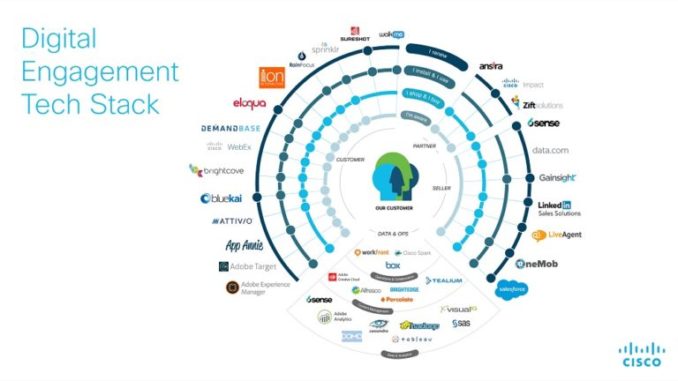
The average marketer works with 28 technology vendors, according to a study by Adledger and MadHive looking specifically at brand marketers, agency marketers, and digital publishers. What’s more, 70 percent of those marketers said they think that number of vendors will increase in the next three years.
Brands have a crazy pile of technology on their hands for a lot of reasons. New channels have emerged, new ways to manage consumer data have evolved, and point solutions are always popping up to deliver quick, added value. Brands may decide they need a way to centralize customer data or tack on a site optimizer for a quick fix, but then end up relying on those solutions more and more over time without ever having embedded them strategically into their stack.
But, a complex martech stack can also be costly–in the form of time, lost data and bad customer experience. Brands can get ahead of the complexity and make the most of their tech stack with a bit more crafty teamwork.
Making sense of martech: Tips for getting started
Tackle internal complexity first
With the martech landscape at well over 7,000 different technology vendors, nearly every brand has a unique technology setup that has evolved over the past 15 years. But, that doesn’t mean that every new wave of technology is necessary, or that every category needs 30 offerings.
We’ve gotten used to the idea that our sector is innovative and moves fast, but that isn’t all good. Martech is an over-invested business sector.
In smaller technology sectors, DMPs don’t lose ground to CDPs while CRM and ESPs are also lurking in the wings with massively overlapping capabilities. Add in the point solutions that solve sticky problems or provide a dose of innovation, and it can get overwhelming to manage.
In marketing, some brands have installed “martech teams” that solely work to maximize the integration, data flow and maintenance of marketing technology relationships because things change so quickly and are so complicated. For a brand, this resource can be a huge help, as many brands are sharing IT resources with the rest of the company and see their projects get de-prioritized.
With a martech team focused only on digital marketing, brands have a team that can talk turkey at vendor QBRs, ask for intelligent product enhancements and make sure they’re maximizing the capabilities of what’s already in place. With a martech team, it’s easier to keep up with nimble tech-first brands like Wayfair, which (quickly) builds everything in house, or Rent the Runway with over $330 million in investments to spend.
Be more open about your tech stack
Brands could also stand to be more open about their martech ecosystem when talking to agencies and vendors. Often, this setup is treated as a state secret, and teams are hesitant to bring up which email system or ecommerce platform they are working with until they’ve committed to a specific project.
This makes it harder for smaller vendors to figure out how to increase compatibility with the right partners. Many small vendors resort to client surveys to understand how marketers operate at a technical level, but getting a more detailed look under the hood offers significantly better understanding as to how marketers are actually doing their job.
Scott Brinker of ChiefMartech has done a great job to encourage brands to share their martech stacks at his events with annual tech stack awards, and this stack shared by Cisco shows just how valuable this information can be.
Brands can see how Cisco has assembled their own capabilities and compare, but vendors also see where they lie next to other solutions. This clarity creates a common path forward and helps everyone dispense with a bit of unnecessary confusion.
Pick open and cooperative partners
For a lot of brands, selecting partners, particularly point solutions, comes down to capabilities. Will this widget help me personalize my website? But, so often, that widget gets worked into the day to day marketing processes and suddenly, brands are beholden to that widget’s roadmap.
Even for smaller solutions, it’s important for marketers to know how they play in the sandbox. Vendors that have partners and integrations already are a good sign. Those with open APIs and standardized ways to share data and reports are good, too.
Content management solution Aprimo recommends that brands pick a larger martech partner as their “hub” for a particular set of capabilities (search or analytics, say) and determine which point solutions to add in as part of a technology system that can work well as a whole.
That way, talking to point solutions can be easier, and everyone knows what types of integrations and compatibilities are required. In many cases, bigger core martech companies have partner programs, app stores and other systems already built up that marketers aren’t always aware of.
Brands should be clear–it’s not just about site personalization (or search optimization, or whatever else). It’s also about teamwork. That two way street of communication should be happening in the early stages of conversation, when it’s still possible to make a martech stack better and more integrated rather than more complex and unruly.
Kenna Hilburn is VP Account Development and Partnerships at Liveclicker.
The post Making sense of martech when brands use 28 vendors and counting appeared first on ClickZ.
Source: ClickZ
Link: Making sense of martech when brands use 28 vendors and counting



Leave a Reply